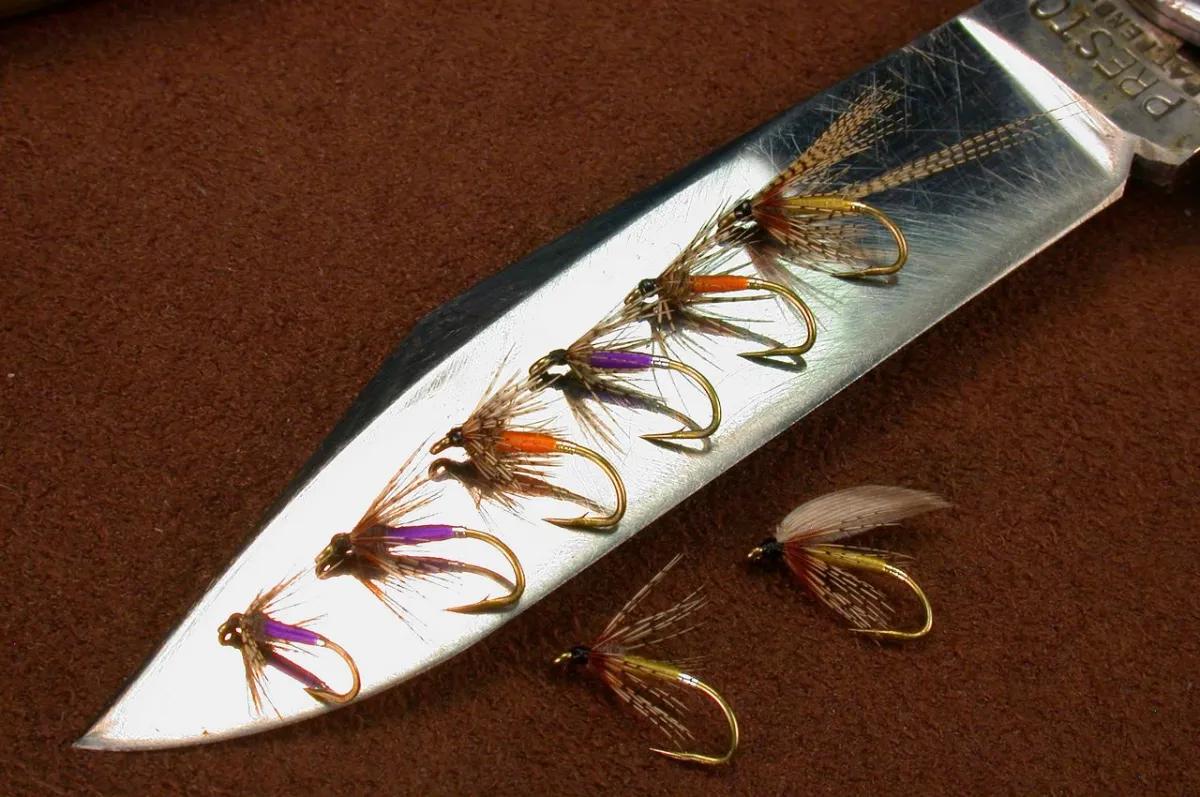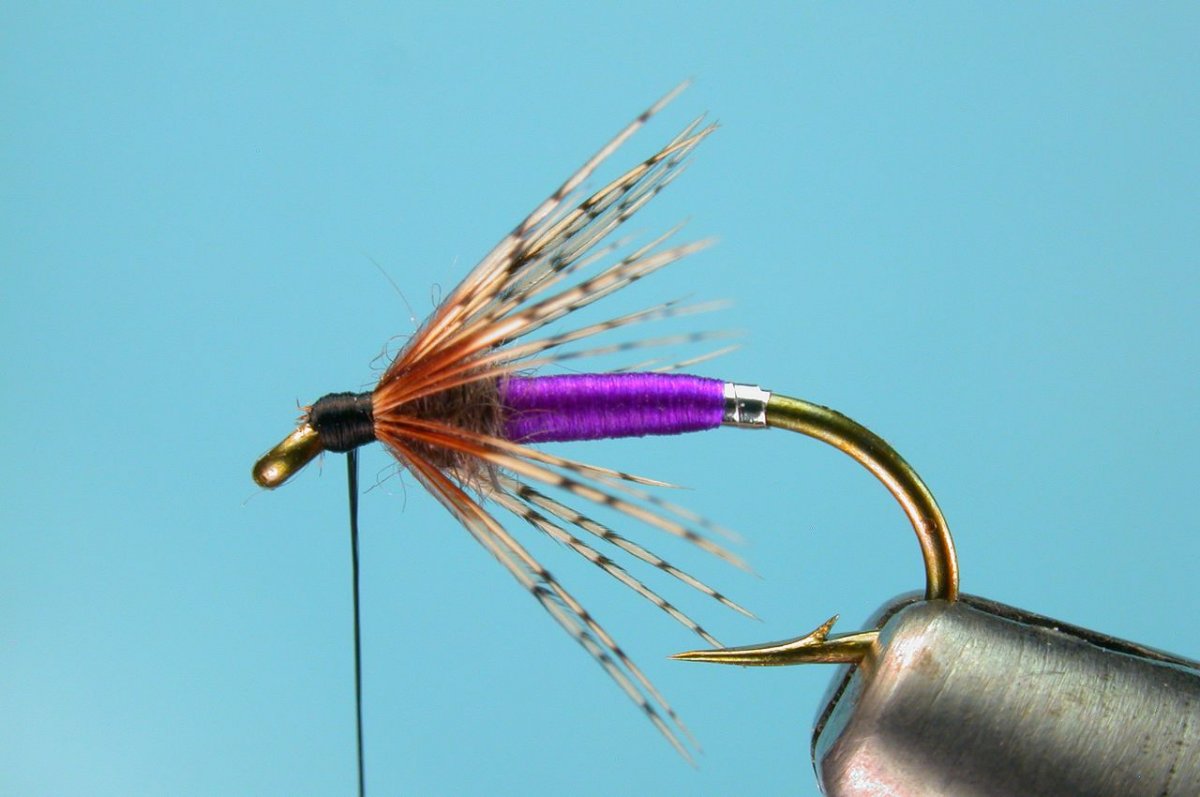
Flies for Montana Rivers: Soft hackles
There are few things in fly fishing that are more satisfying than tying flies that adhere to the adage “less is more.” Soft hackle flies are a perfect example of flies that play off of simplicity, clean lines, and perfect proportions. They’re also very fun and effective flies to fish that work on both the dead-drift and while swung under tension. Some of our Southwest Montana Rivers are fantastic rivers for soft hackle fishing as they have prolific insect hatches and water that lends itself to swinging flies.

The soft hackle is a very straightforward fly style more than it is a specific fly pattern. The hackle for the soft hackle is typically tied with webbier, softer feathers as opposed to the stiff-fibered feathers that are used for dry flies. The fibers of the softer feather will soak up water more so than the stiff dry fly feathers and will flow and pulsate more when the fly is swung through the current. This soft, absorbent hackle also encourages the fly to swing a little bit under the surface film while being fished, rather than skating along on top of the film. The hackle feathers for soft hackle tying are commonly taken from the India hen, grouse, Hungarian partridge, or the starling. All are affordable options and offer slightly different colors and patterns.
Naming soft hackles tends to be more a description of the fly itself rather than what it may be imitating, if it imitates anything at all. A couple of the most common and historical soft hackles are simply called “the grouse and orange” or “the partridge and olive.” These straightforward names simply describe the fly’s color and the hackle that it’s tied with. A personal favorite is the “pearl soft hackle” which is simply a pearl flashy body, a bit of dubbing, a bead, and -big surprise, a soft hackle.
Soft hackles can definitely be tied and fished to imitate emerging insects like caddis and mayflies, however their usage extends far beyond “matching the hatch.” In much the same way streamers will elicit curiosity or aggression strikes, soft hackles will also hook fish when there is no apparent hatch going on. Traditionally, soft hackles aren’t really weighted as they’re more of less intended to be fished right under the surface film. However, some very effective and more “modern” soft hackles do incorporate brass or even tungsten beads in their design. A small bead or just a little bit of flash may add to a soft hackle’s effectiveness if it’s tied for those times in between hatches when a little sparkle may get more attention from the fish.
As most of our Montana trout aren’t super picky, I tend to tie my soft hackles a little larger than some. I will tie some as large as size 6, although mine are generally sizes 10-14, which is a fun and easy size to tie. On some rivers effective soft hackles may be diminutive size 14-18s depending on what size of insects the fish typically eat.

Master fly tyer Charlie Craven illustrates an excellent method for tying soft hackles on his website. The step-by-step can be seen here. His ultra-clean tying and simple three or four material fly in the demonstration are exactly what makes tying and fishing soft hackles so fun. "Less is more" is a perfect way to describe the fly in Charlie’s post and the simple tying technique demonstrated can be altered in dozens of ways to make for your own unique flies.
Soft hackles can be fished a few different ways, whether it’s cast upstream and dead drifted under a strike indicator or swung under tension in more of a down-and-across swing. Another popular and effective method for fishing soft hackles is the “drift and lift,” a technique that combines the upstream cast and drift, with a bit of a swing and lift under tension at the end of the presentation. Personally, I opt to swing soft hackles on light spey rods, it can be a very fun way to cast and step down some likely holding water, waiting on the exciting “grab” while the fly is swung under tension. The added reach gained by fishing longer spey and switch rods also allow the angler to have more room to mend the line and control the fly’s swing.

A couple of our favorite Montana rivers for fishing soft hackles are the Madison and Missouri. These two fisheries lend themselves to swinging soft hackles because they’ve got such large insect populations with consistent, large hatches, and the character of the rivers lend themselves to the fishing techniques more closely associated with fishing soft hackles.The riffles and runs in these rivers make for great holding water to swing soft hackles through. Both rivers have wide sweeping runs and long riffles that hold fish and provide great habitat for insects.

At Montana Angler our guides are well versed in all things trout fishing and soft hackle fishing techniques are no exception. If you’d like to learn more about fishing soft hackles book a guide trip with us and let our all star guides show you how fun swinging soft hackles on our Montana Rivers can be!

By Andrew Grillos
